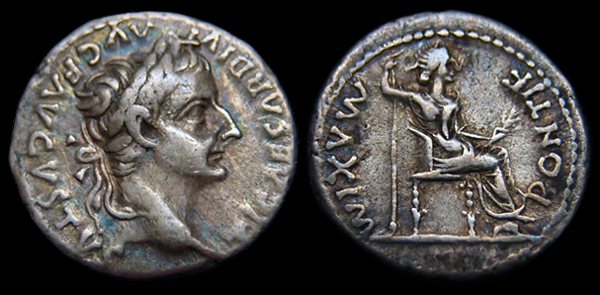
I am grateful to Revd Jonathan Halliwell for this interesting reflection on Matthew 22.15-22, the lectionary Gospel for Sunday 22 October 2023. Jonathan is a distinctive deacon serving his curacy in St John & St Philip, The Hague. As part of his ministry, he serves as a port chaplain for the Mission to Seafarers in Rotterdam. If you want to contact Jonathan you can do so via deacon@stjohn-stphilip.org
Clare Amos
Director of Lay Discipleship
Diocese in Europe
In preparing to preach about our relationship with money, I was interested to discover that Holland is the only country in the European Monetary Union that uses a religious inscription on its coins. There they are, inscribed on the edge of the coin (to prevent forgery and clipping) the words ‘(May) God be with us!’
The full quotation, “if God is with us who is against us?” (Romans 8.31), written in Latin (quis Deus nobiscum quis contra nos) appeared on coins of the Dutch Republic in 1581. They are part of the founding charter of the modern Netherlands. There is some irony in the fact that the text combines religion and money, the two chief causes of the Dutch secession from Spain. But history matters and people have long memories!
There is another irony that a country without a state religion should invoke the protection of God in this way. Yet the Reformed Political Party (SGP), who support the separation of church and state, campaigned for its inclusion. In their desire to outlaw false religions and dethrone deities, they uphold the words of Psalm 96:5, which declares, ‘for all the gods of the nations are idols, but the Lord made the heavens.’ Our gospel today (Matthew 22.15-22) reminds us that Jesus had to confront the political and religious establishment of his time, not least the divine authority of Caesar.
In her first blog of this new series, Clare Amos noted that there seems to be a common understanding among the New Testament writers that the ‘image of God’ was found with a particular fullness in the person of Jesus Christ. Now when Jesus asks, ‘In whose image (eikōn) is this coin?’, that is, ‘whose head is on it?’, Jesus was relativizing the authority of Caesar, putting him in his place, so to speak. Jesus had asked the Pharisees and the Herodians to bring him a denarius, a Roman coin which bore an image of the emperor’s head, containing the inscription in Latin, ‘Tiberius Caesar, son of the divine Augustus (‘Tiberius Caesar Divi Augusti Filius Augustus). He exposes the question of whether to pay taxes to Caesar or not as a false dilemma and answers ‘Therefore render to Caesar the things that are Caesar’s, and to God the things that are God’s.’ In other words, pay your taxes to Caesar but remember that God has ultimate authority over all of his creation.

A Roman denarius showing the head of the Emperor Tiberius
Of course, such a bold claim did not come without a cost and Jesus would pay the ultimate price for dethroning Caesar. As Saint Augustine reflected,
He himself, the only-begotten, was created to be wisdom and justice and holiness for us, and he was counted among us, and he paid the reckoning, the tribute to Caesar. (Saint Augustine, Confessions)
In the light of our gospel today, it is significant that the charge against Jesus was also written on an inscription. The inscription placed above him on the cross bore the title ‘Jesus of Nazareth, King of the Jews’ (Mark 15.26). By suggesting that Jesus’ execution was made on the grounds of sedition against the emperor, it raises the question of authority again.
Coins and inscriptions are powerful symbols which raise questions about our allegiances and affect the way we live our lives. In laying down his body, Jesus spared usthe wages of sin (Romans 6.23), that we might have life, and life eternal. In allowing his body to be tortured, disfigured and abused, he restored the divine image in us. He reminds leaders that all human persons, even Caesar, bear the image of the living God (cf. Genesis 1.26-27).
So in expressing our allegiance to God, we make the words inscribed on the Dutch coin that God be with us into a pledge. The effect of ‘dethroning Mammon’ (to borrow the title of Archbishop Justin Welby’s Lent book), or any of the other contemporary forces which dominate our lives is to restore the image of God in us, enabling our relationships with one another to thrive. By restoring the authority of God, in whose image we were created, we can be remade in the image of God. As the monk Evagrius Ponticus argued, love of neighbour is love of God because it is love of the image of God.
Prayer of Confession
The following prayer of confession, one of the alternatives offered by Common Worship, reminds us that we are all created to bear the image of God:
Father eternal, giver of light and grace,
we have sinned against you and against our neighbour,
in what we have thought,
in what we have said and done,
through ignorance, through weakness,
through our own deliberate fault.
We have wounded your love,
and marred your image in us.
We are sorry and ashamed,
and repent of all our sins.
For the sake of your Son Jesus Christ,
who died for us,
forgive us all that is past;
and lead us out from darkness
to walk as children of light. Amen
